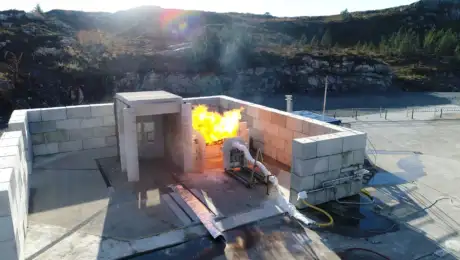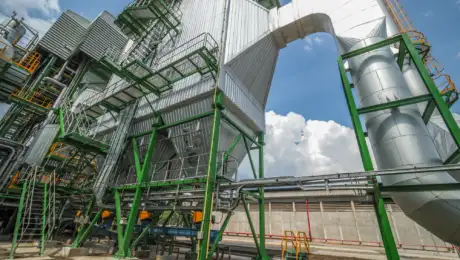
Testing for passive fire protection is essential for safety, legal compliance, property protection, and environmental preservation
A fire incident at a workplace can result in catastrophic losses, including loss of life, property damage, environmental devastation, and significant financial burdens.
Understanding how to prevent accidents and minimise their impact is paramount. One approach to mitigation is to install Passive Fire Protection (PFP) equipment and systems.
The efficiency of PFP products depends on their quality. Manufacturers of PFP must ensure that their products meet the required standards and regulations for fire-resistant performance and, therefore, must undertake rigorous fire testing to be certified by impartial third-party inspectors.
By prioritising fire protection and product quality, businesses can significantly reduce the risks and consequences associated with workplace fires.
Gexcon's PFP testing solutions
At Gexcon, we have conducted comprehensive tests on various materials, including different types of spray coating systems, fibre glass and pyro gel systems, PFP jacket systems, penetration seal systems, and more. We provide a wide range of testing services for Passive Fire Protection (PFP).
Explosion Before Fire Scenario (Blast Testing)
Our assessments are based on ISO/DIS 23692-1 and focus on the performance of PFP systems when an explosion precedes a fire.
Standard Jet Fire Scenario
We conduct tests in accordance with ISO 22899-1 to evaluate how PFP systems handle standard jet fire conditions.
High Heat Flux Jet Fire Scenario
Our testing examines the resilience of PFP systems under high heat flux jet fire scenarios, ensuring their effectiveness in challenging conditions.
Cryogenic Spills and PFP Testing
We offer testing services related to PFP systems and their performance in response to cryogenic spills. These tests are based on ISO 20088-1, -2, and -3.
Jet Fire Test Condition Optimisation with CFD (Computational Fluid Dynamics)
We utilise advanced CFD techniques to optimise jet fire test conditions.
Passive Fire Protection High Heat Flux
PFP Testing FAQ's
-
1What is the purpose of testing passive fire protection?
The aim of testing passive fire protection is to ensure that passive fire protection measures and systems are effective in containing and mitigating fires, thereby safeguarding lives, property, and the environment.
-
2How often should a PFP product be tested?
The frequency of testing Passive Fire Protection (PFP) systems can vary depending on several factors, including local regulations, industry standards, the type of PFP system, and the specific environment in which it is installed.
It's essential to refer to local building codes, industry standards, and the manufacturer's recommendations for specific guidance on testing frequencies for PFP systems.







